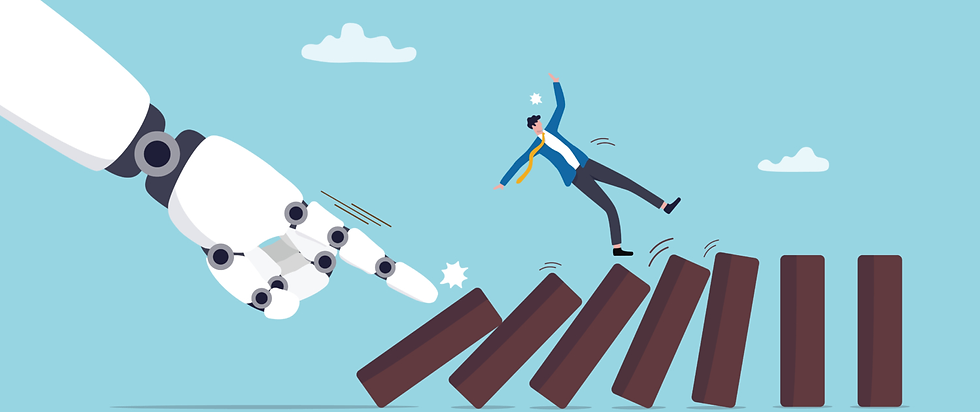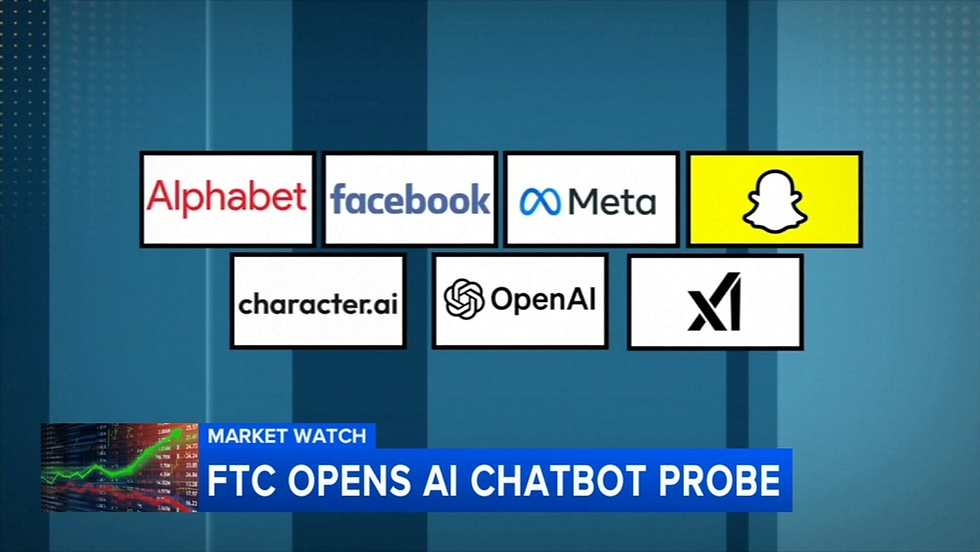Inside Google's AI Training: The Overlooked Human Labor Behind AI Models
- Olivia Johnson

- Sep 14, 2025
- 10 min read

Why Google's AI training human labor matters
Recent reporting has highlighted Google AI workers organizing to improve working conditions in labeling and moderation roles. That renewed attention matters not as a labor beat curiosity but because the people who tag data, screen content, and score model outputs play a direct technical role in how Google’s AI features behave in the consumer products we use every day.
Human reviewers shape a model’s safety boundaries, factual accuracy, and even its conversational tone. When these workers are available, trained, and operating under stable policies, models tend to show fewer harmful responses and better alignment with product intentions. Conversely, shifts in staffing, policy, or contractor arrangements can alter moderation thresholds, slow safety updates, and introduce subtle regressions that users encounter as more or less cautious or helpful behavior from chatbots and search features.
For engineers, product managers, and enterprise customers, workforce signals are operational signals. Public conversations about the human labor behind AI chatbots underscore how labeling and moderation work is embedded in release pipelines and safety audits. Tracking hiring trends, vendor arrangements, and legal rulings isn’t just HR: it’s a practical part of product risk management that can affect uptime, update cadence, and user trust.
Key takeaway: human labor is a functional component of AI systems, not a peripheral cost center; changes in that labor pool can translate into measurable product differences.
Tasks that make up Google's AI training and the human labor behind AI models

Who does what in the workflow
At a practical level, several discrete human roles feed the data and judgments modern AI needs:
Data labelers who tag images, transcripts, and text for supervised learning.
Annotators who create structured training examples or clarify ambiguous cases.
Content moderators who filter out harmful, illegal, or policy-violating inputs and outputs.
Human raters who score model responses for quality, safety, and helpfulness during fine-tuning (for example, in RLHF — reinforcement learning from human feedback).
Marketplace reporting on human labor behind AI chatbots explains how these roles are woven into product pipelines and why they matter for accuracy and safety. Each role maps to a technical stage: labelers produce the ground-truth data for supervised training; raters create reward signals for RLHF; moderators enforce content guardrails for deployment.
Real user impact when the workforce changes
When reviewer availability or policies shift, end users feel the effect quickly. If moderation teams tighten policy or reduce staffing, a model might become more conservative and refuse more prompts. If label quality drops because of high turnover or low pay, models may exhibit more factual errors or inconsistent tone across features. These are not abstract risks: product tests, bug reports, and public incidents have shown how human-in-the-loop adjustments change what an AI will or will not say.
insight: processes that look internal—like a change in contractor staffing—can surface as public-facing model behavior overnight.
How these tasks link to product releases
Human-in-the-loop steps are often explicit gates in release checklists: safety audits, label refreshes, and rater-derived metrics must meet targets before rolling out updates. That means labor disputes, hiring freezes, or vendor shifts can delay feature launches or force rollbacks. Recent coverage has emphasized organizing by Google AI workers focused on working conditions in labeling and moderation roles and the ways that work is integrated with Google’s product pipelines.
Key takeaway: the human tasks behind models are operational levers—when they move, product behavior follows.
How human labor affects model quality, performance, and how approaches compare

Why human annotations matter for accuracy and safety
Human annotations and ratings are the backbone of many evaluation and fine-tuning regimes. Where automated heuristics fail to grasp nuance—sarcasm, cultural references, or borderline content—human judgments create the labels and reward signals that teach models what counts as helpful or harmful. Improvements in labeling practices frequently translate into measurable reductions in unsafe outputs and more coherent responses in user-facing tests.
Scholarly work frames this as human agency inside AI-augmented environments: human reviewers contribute interpretive judgment that machines can’t replicate reliably yet, especially for social and ethical evaluations. For example, human raters teach a model to prefer responses that are not only factually correct but also contextually appropriate.
Where automation helps and where it doesn’t
There is a growing temptation to automate more of the human work: synthetic labeling, programmatic data augmentation, and heuristic filters can scale. But that scale brings trade-offs. Automated pipelines perform well on repetitive, structured tasks but struggle with edge cases and policy-sensitive moderation. That’s why most large AI teams use a hybrid approach where automation accelerates throughput and humans handle nuance.
Operational metrics that indicate workforce health
Teams and managers watch a few KPIs to gauge when human labor could affect product performance:
Reviewer throughput: how many items are annotated or rated per unit time.
Moderation latency: how long it takes to resolve flagged outputs.
Labeler error rates and inter-rater agreement: measures of quality and consistency.
Shifts in these metrics often presage visible changes in product behavior. For instance, if moderation latency spikes during a labor dispute, more risky outputs can slip into production before safety filters are updated; if inter-rater agreement drops, the model’s learned judgment may become noisier.
How worker conditions intersect with performance
News conversations about worker conditions and union activity are not only labor stories; they intersect with those operational metrics. If contractor pay or classification changes, firms may re-evaluate vendor arrangements, leading to accelerated hiring, migration to in-house teams, or increased automation—each choice has performance consequences. Legal or contractual changes can reshape how much human judgment is available and how consistently it’s applied.
insight: workforce shifts are a performance risk vector as much as a social one.
Key takeaway: human reviewers are measurable inputs; monitoring their throughput and quality is as important as tracking algorithmic tests.
Eligibility, rollout timeline, and legal protections for workers in Google's AI training

Who is protected and how classification matters
A large share of the labor that feeds AI training is performed by contractors, vendor staff, or third-party vendors rather than direct employees. Worker classification determines which legal protections apply: in the U.S., the Fair Labor Standards Act establishes minimum wage, overtime, and recordkeeping protections for employees, but those safeguards depend on whether a worker is classified as an “employee” or an independent contractor.
Recent organizing at Google has spotlighted disputes over employment status, pay, and workplace safeguards for those doing labelling and moderation tasks. Reporting has focused on how these debates affect both working conditions and how Google staffs its labeling operations.
How staffing decisions affect rollout timelines
Operationally, staffing changes have direct consequences for training and deployment schedules. If a vendor pool is paused or a contractor cohort is replaced mid-cycle, the immediate effect is slower annotation throughput, delayed safety audits, and pushed-out releases. Conversely, scaling a stable, well-trained reviewer base can accelerate iteration and allow more aggressive safety tuning.
Teams often build buffer periods into release plans to allow for annotation backlogs and moderation reviews, but sudden labor developments—strikes, union drives, or regulatory changes—can still require last-minute changes to timelines.
Legal and procurement dynamics to watch
Labor law developments can influence vendor contracts and internal staffing models. Court rulings or enforcement actions clarifying who qualifies as an employee under laws like the FLSA may prompt companies to reclassify workers, change pay structures, or insource tasks to manage compliance risks. These are policy levers that ripple into procurement, budget planning, and long-term roadmap decisions.
insight: legal rulings about worker classification can cause companies to rethink whether to outsource critical human-in-the-loop functions.
Key takeaway: employment classification and legal protections are operational levers that shape how reliably human labor can support model development and deployment.
Comparison with previous workflows and alternatives: trade-offs and industry context
How workflows have evolved
Early labeling and moderation work in AI was often ad hoc—simple crowdsourcing tasks on microtask platforms with spotty guidelines. Today's pipelines formalize human review into repeatable processes like RLHF and safety auditing, which increases consistency but also creates dependence on a steady supply of trained reviewers. That formalization improved product predictability, but it also institutionalized the need for continuous human oversight.
Automation, synthetic data, and the limits of scale
Alternatives to human review include automated labeling tools, synthetic data generation, and end-to-end model training on massive unlabeled corpora. These approaches can deliver scale and lower cost, but they trade away the nuanced judgment humans provide. Research and reporting indicate that human reviewers remain essential when models must make complex social judgments or adhere to detailed policy constraints.
Reports on human labor behind chatbots and academic analyses of AI-augmented environments both emphasize that automation complements but does not fully replace human judgment. The result is a hybrid landscape where teams must pick a balance between speed and nuance.
Industry context and strategic vulnerability
Multiple major AI companies rely on similar human labor pools. Because of this shared dependency, widespread labor disruptions—regulatory shocks or organized labor actions—could create an industry-wide capacity crunch. Coverage of Google’s in-house organizing highlights how a single firm’s labor choices can draw attention to broader supply chain vulnerabilities.
For product teams and procurement, the choice between onshore full-time staff, offshore contractors, or automated pipelines drives different trade-offs in cost, compliance risk, and model behavior. Worker organizing makes these trade-offs immediate: decisions that once felt purely economic now carry reputational and operational considerations.
Key takeaway: the industry’s reliance on human reviewers is both a strength (nuanced judgment) and a potential weakness (labor risk), and teams should design for both.
Real-world usage and developer impact: what engineers and product teams need to know

How workforce variation shows up in releases
Developers often notice that a model’s behavior shifts between releases in ways that don’t trace back to code changes. These subtler behavioral regressions—tone drift, different safety thresholds, inconsistency on edge cases—can arise from changes in labeling standards, reviewer cohorts, or vendor instructions. Product teams need to treat workforce signals as part of their release risk model.
Instrumentation of dataset provenance and reviewer metadata is becoming standard practice. Annotating training runs with who labeled what, which vendor or cohort performed the task, and the review guidelines used during labeling makes it possible to trace behavioral changes back to human-process differences.
Troubleshooting and observability practices
When something odd appears in production—an uptick in moderation escapes or an unusual pattern of refusal responses—teams should include workforce status in their incident pipelines. That means:
Correlating behavioral telemetry with reviewer throughput and labeling dates.
Maintaining audit logs of guideline changes and rater training runs.
Including vendor and classification metadata in training artifacts.
These practices let teams distinguish algorithmic regressions from changes introduced by the human pipeline.
Business and policy consequences
Worker organizing, legal scrutiny, or vendor contract renegotiations can force procurement and legal teams to modify supplier arrangements. That has budgetary consequences and can change the cadence of feature development. Planning for contingency—like fallback vendor pools, staggered releases, or increased investment in automation for high-throughput tasks—helps maintain product resiliency without sacrificing safety.
insight: an incident postmortem that ignores human-process signals is incomplete; workforce status can be the root cause.
Key takeaway: treat human review pipelines as first-class observability dimensions in ML operations.
FAQ — Common questions about Google's AI training human labor
Q: Who does the human work in Google’s AI training pipelines?
A: Roles include labelers, moderators, annotators, and human raters—often a mix of in-house staff and contractors; recent reporting has focused on those workers’ conditions and organizing efforts. The Nation has reported on organizing among Google AI workers and their working conditions.
Q: Does human labor materially change model performance?
A: Yes. Human annotations and ratings are core inputs for safety fine-tuning and quality checks; scholarly work emphasizes that human agency is a value-creating component in AI-augmented systems, especially for nuanced judgments. Academic analyses discuss the role of human work in these environments.
Q: Can companies replace human reviewers with automation?
A: Not entirely. Automation helps scale repetitive tasks, but humans remain essential for contextual judgments and policy-sensitive moderation. Research and industry reporting point to hybrid workflows as the realistic near-term model. Marketplace coverage explains where human judgment is still necessary for chatbots and smart tools.
Q: What legal protections apply to people doing this work?
A: U.S. protections like the Fair Labor Standards Act apply depending on worker classification (employee vs contractor). Changes in classification—driven by litigation, regulation, or union activity—can materially change the level of protection these workers receive. The U.S. Department of Labor provides the statutory baseline for employee protections under the FLSA.
Q: What operational metrics should product teams monitor now?
A: Track reviewer throughput, moderation latency, labeler error rates, dataset provenance, and vendor contract changes. These indicators can warn of upcoming behavioral shifts or delivery delays. Marketplace’s technical coverage recommends observing these human-derived signals when teaching AI to “think like a human”.
Q: How should teams prepare for labor-related disruptions?
A: Build redundancy into vendor choices, instrument reviewer metadata in training artifacts, and include workforce status in release risk assessments and incident postmortems. Proactive contract clauses that require continuity or quick ramping can reduce shock when labor conditions change.
What the news about Google's AI training human labor means for users and the ecosystem

A forward-looking perspective on human labor in AI systems
The recent reporting on Google workers and the research literature together draw a clear picture: human labor is not an expendable appendage to modern AI; it is a structural ingredient that shapes safety, accuracy, and product behavior. In the coming years, expect companies to balance three tensions: scaling capabilities, preserving nuanced judgment, and managing labor and legal risk.
Near-term trends to watch include union negotiations and vendor disclosures that will influence how reliably companies can staff labeling and moderation roles. Legal developments—particularly around worker classification and enforcement of wage and hour laws—may prompt strategic shifts from contractor models to more integrated, onshore teams or, alternately, to further investment in automation where feasible.
There are trade-offs and uncertainties. Increasing automation can improve throughput and reduce cost, but it risks losing human context and invites new kinds of failure modes. Strengthening worker protections can improve labeling quality and stability, yet it may raise costs and motivate different procurement strategies. Product teams, regulators, and enterprises must weigh these trade-offs transparently.
For engineers and product leaders, the practical opportunity is clear: treat workforce signals as part of your system design. Invest in dataset provenance, reviewer metadata, and contractual resilience so that model behavior can be traced and managed across human-process changes. For policymakers and advocates, the opportunity is to craft frameworks that ensure fair labor conditions without undercutting the human judgment AI systems need to be safe.
If companies and regulators take a collaborative approach—acknowledging human reviewers as core infrastructure rather than hidden overhead—then model quality, worker welfare, and public trust can improve together. That future isn’t guaranteed, but it is actionable: in the next product cycles and policy windows, decisions about staffing, contracts, and transparency will shape whether AI systems become more resilient and trustworthy—or more brittle and opaque.
Final thought: the people behind the labels are part of the machine now; recognizing that connection is the first step toward building AI systems that are both powerful and responsible.
